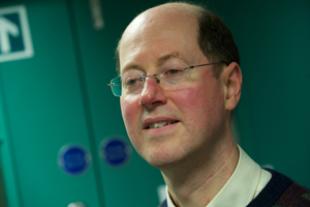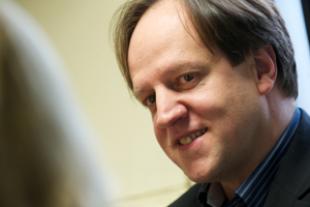Post date:
Tiny LED lights now being developed could deliver Wi-Fi-like internet communications, while simultaneously displaying information, and providing illumination for homes, offices and a whole host of other locations.
Over the next four years, with Engineering and Physical Sciences Research Council (EPSRC) funding, a consortium of UK universities led by the University of Strathclyde will be developing this innovative technology to help unleash the full potential of ‘Li-Fi’ – the transmission of internet communications using visible light rather than the radio waves and microwaves currently in use.
Although the potential possibilities offered by Li-Fi are already being explored all over the world, this EPSRC-funded consortium is pursuing a radical, distinctive vision that could deliver enormous benefits.
Underpinning Li-Fi is the use of light emitting diodes (LEDs), a rapidly spreading lighting technology which is expected to become dominant over the next 20 years. Imperceptibly, LEDs flicker on and off thousands of times a second. By altering the length of the flickers, it is possible to send digital information to specially adapted PCs and other electronic devices – making Li-Fi the digital equivalent of Morse Code. This would make the visible part of the electromagnetic spectrum available for internet communications, easing pressure on the increasingly crowded parts now used.
But rather than developing Li-Fi LEDs around 1mm2in size, which other researchers around the world are concentrating on, the EPSRC-funded team is developing tiny, micron-sized LEDs which potentially offers a number of major advantages:
Firstly, the tiny LEDs are able to flicker on and off 1,000 times quicker than the larger LEDs this also means they can transmit data more quickly. Secondly, 1,000 micron-sized LEDs would fit into the space occupied by a single larger 1mm2 LED, with each of these tiny LEDs acting as a separate communication channel. A 1mm2sized array of micron-sized LEDs could therefore communicate 1,000 x 1,000 (-i.e. a million) times as much information as one 1mm2 LED.
Moreover, each micron-sized LED would act as a tiny pixel. So one large LED array display (e.g. used to light a living room, a meeting room or the interior of an aircraft), could also be used as a screen displaying information at exactly the same time as providing internet communications and the overall room lighting.
Professor Martin Dawson of the University of Strathclyde, who is leading the initiative, says: “Imagine an LED array beside a motorway helping to light the road, displaying the latest traffic updates and transmitting internet information wirelessly to passengers’ laptops, netbooks and smartphones. This is the kind of extraordinary, energy-saving parallelism that we believe our pioneering technology could deliver.”
Eventually, it could even be possible for the LEDs to incorporate sensing capabilities too. For example, your mobile phone could be equipped with a flash that you point at a shop display where everything has been given an electronic price tag, and the price of all the items and other information about them would show up on your phone’s display.
You can find out more about the research in an audio slide show on the EPSRC You Tube channel.
To enable the remarkable potential to be realised, the consortium has drawn together a unique breadth and depth of expertise unmatched by any other Li-Fi research team anywhere in the world.
In the long-term larger LED lights like this could be replaced by arrays of micron-sized LEDS which will enable many different tasks to be carried simultaneously such as powering a laptop, providing illumination and displaying information.
Professor Dawson says: “The Universities of Cambridge, Edinburgh, Oxford and St Andrews are all working with us, bringing specific expertise in complementary areas that will equip the consortium to tackle the many formidable challenges involved – in electronics, computing and materials, for instance – in making this vision a reality. This is technology that could start to touch every aspect of human life within a decade.”
Further Information
The term Li-Fi was coined by one of the partners in the project, Professor Harald Haas from the University of Edinburgh in a TED talk in July 2011. For more information see http://bit.ly/tedvlc
Emerging spin-out companies that are related to this research are: mLED and pureVLC
Article in The Engineer:




